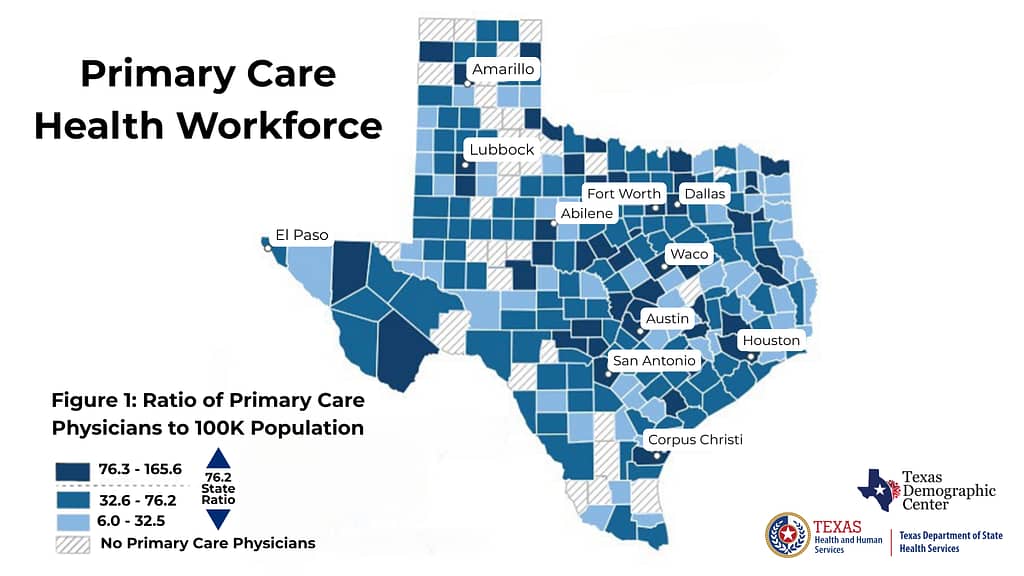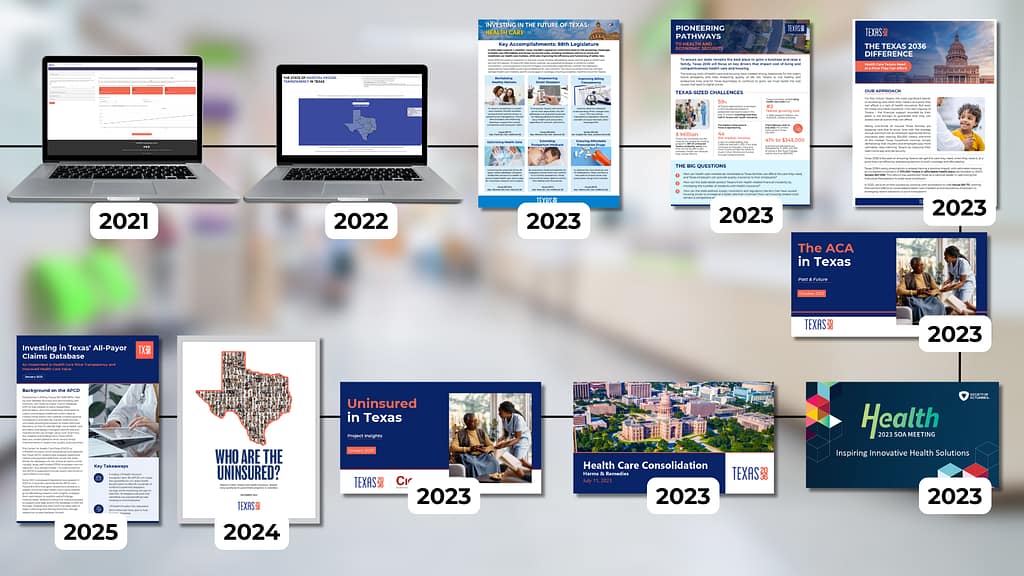This is a preview of our Texas 2036 newsletter on efforts by legislators to fix health care, the Texas way. To receive this weekly look at our work, sign up here.
Fixing Texas health care through competition

Health care in Texas isn’t just getting more expensive. It’s getting less competitive and less transparent.
That’s why this week we are looking at the top issues, what the data is saying and how Texas is working to address health care access and affordability.
The problem: Not enough competition

Over the past 20 years, hospital, insurer and private investor mergers and acquisitions, both horizontal (hospital to hospital) and vertical (hospital to doctor to insurer), have fundamentally reshaped the market.
The result? Prices go up, choice goes down and quality stays the same.
Here’s what the data tells us

The research consensus is clear:
- Prices rise after consolidation. Hospital mergers increase prices by 6–18% without improvements to care quality.
- Vertical integration often drives up prices and reduces transparency. Hospitals that acquire physician practices charge more for the same services, often adding “facility fees” that weren’t there before.
- Private equity adds fuel to the fire, increasing prices and in some cases, worsening patient outcomes.
- Texas is ground zero. We have one of the highest shares of residents in highly concentrated hospital markets among peer states.
Why does competition matter?

This isn’t just a health care problem. It’s a market failure.
- Texans are paying more for fewer choices. Hospital markets like those in Houston and Dallas are becoming more concentrated and prices are often hidden from patients and employers alike.
- Price variation is massive — not just between cities, but within them. The same procedure can cost three times as much at one hospital as another, with no difference in outcome.
- Employers and public plans are footing the bill and those costs get passed on to workers and taxpayers.
🗣️ What Texans are saying
Polling confirms that voters are deeply concerned and ready for action:
- 91% agree Texans should know who owns their doctor, hospital and insurer.
- 87% are concerned about investment groups influencing medical decisions.
This isn’t a partisan issue. It’s a trust issue. Texans want transparent, accountable and fair markets.
The Texas 2036 approach: Healthy Markets

Texas 2036 has developed a reform framework grounded in one principle: make markets work like they’re supposed to.
We call it the Healthy Markets approach, and it focuses on three pillars:
1. Informed: Markets don’t work without information.
We’re working to:
- Expose hidden ownership structures so patients and regulators know who controls their care.
- Make pricing data usable—so patients, employers and policymakers can see where their money is going.
- Modernize billing systems and remove loopholes that let facilities charge more simply because of who owns them.
2. Competitive: We need more options, not fewer.
We’re supporting reforms that:
- Expand the number and types of providers, including telehealth and non-physician clinicians.
- Give regulators the ability to review proposed consolidations before they reshape the market.
- Target anti-competitive contracting practices that limit insurer flexibility and trap patients in narrow networks.
3. Engaged: Consumers and employers should have the tools and incentives to choose value.
- That means allowing insurance plans to reward patients for choosing lower-priced, higher-quality providers.
- It also means removing state barriers that block these smart incentives from being implemented.
TXLege 2025: Policy in motion

This session, a slate of targeted bills seeks to modernize the rules of the game so that Texas health care markets reward value, not volume.
Improve billing transparency by addressing facility fees
Facility fees – House Bill 2556 / Senate Bill 1232
Rep. James Frank, R-Wichita Falls & Sen. Kelly Hancock, R-North Richland Hills
🔎 Shining a spotlight on facility fees: In the Houston area, the issue of the surprise facility fee is garnering greater attention. This Houston Chronicle piece documents impacts of rising out-of-pocket costs attributable to these fees.
Incentivize greater use of high-value providers
🏥 Patient incentives – SB 926 / HB 1959
Sen. Hancock & Rep. Frank
The Opportunity of Price Variation: Widespread differences in prices can create an opportunity for large savings, but only if employers and patients are given the information they need and the appropriate incentive to seek them out.
Protect competition with pre-merger alerts
🩺 Merger reporting – HB 2747
Rep. Frank
Provide patients and policymakers with information on ownership and control
🧑⚕️ Transparency of Ownership – HB 4408 / SB 1595
Rep. Jay Dean, R-Longview & Sen. Hancock
More health care data you need to know:

Source: UT System
Unlocking metrics to contain health care prices
Fully funding the All-Payer Claims Database gives policymakers the tools to conduct more Texas-specific research to make our state benefit plans a market-leading example that promotes high-quality, low-cost providers.
🔍 Learn more about the APCD.
 Source: Texas Demographic Center and Texas Department of Health and Human Services
Source: Texas Demographic Center and Texas Department of Health and Human Services
A growing need for more health care workers
The current challenge: Right now, 224 of Texas’ 254 counties are designated health professional shortage areas!
A TXLege solution: Increase provider supply
🧑🎓 High school-to-hospital pipeline – HB 2189
Rep. Donna Howard, D-Austin
👨⚕️ Advanced Practice Registered Nurses – HB 3794 / SB 1859
Rep. Drew Darby, R-San Angelo & Sen. Mayes Middleton, R-Galveston
Shaping a better health system with TX2036 data

Texas 2036 has been pulling together research to ensure Texans get better access, lower costs and a system that works. Our research includes:
- Investing in Texas’ All-Payor Claims Database (2025)
- Who Are the Uninsured? (2024)
- Who Are the Uninsured: Project Insights (2023)
- Health Care Consolidation: Harms & Remedies (2023)
- Inspiring Innovative Health Solutions (2023)
- The Affordable Care Act in Texas (2023)
- The Texas 2036 Difference: Health Care Texans Need at a Price They Can Afford (2023)
- Focus Areas 2023-2025: Pioneering Pathways to Health and Economic Security (2023)
- Key Accomplishments in the 88th Legislature: Health Care (2023)
- Health Price Transparency Dashboard (2022)
- Health Coverage Policy Explorer (2021)
